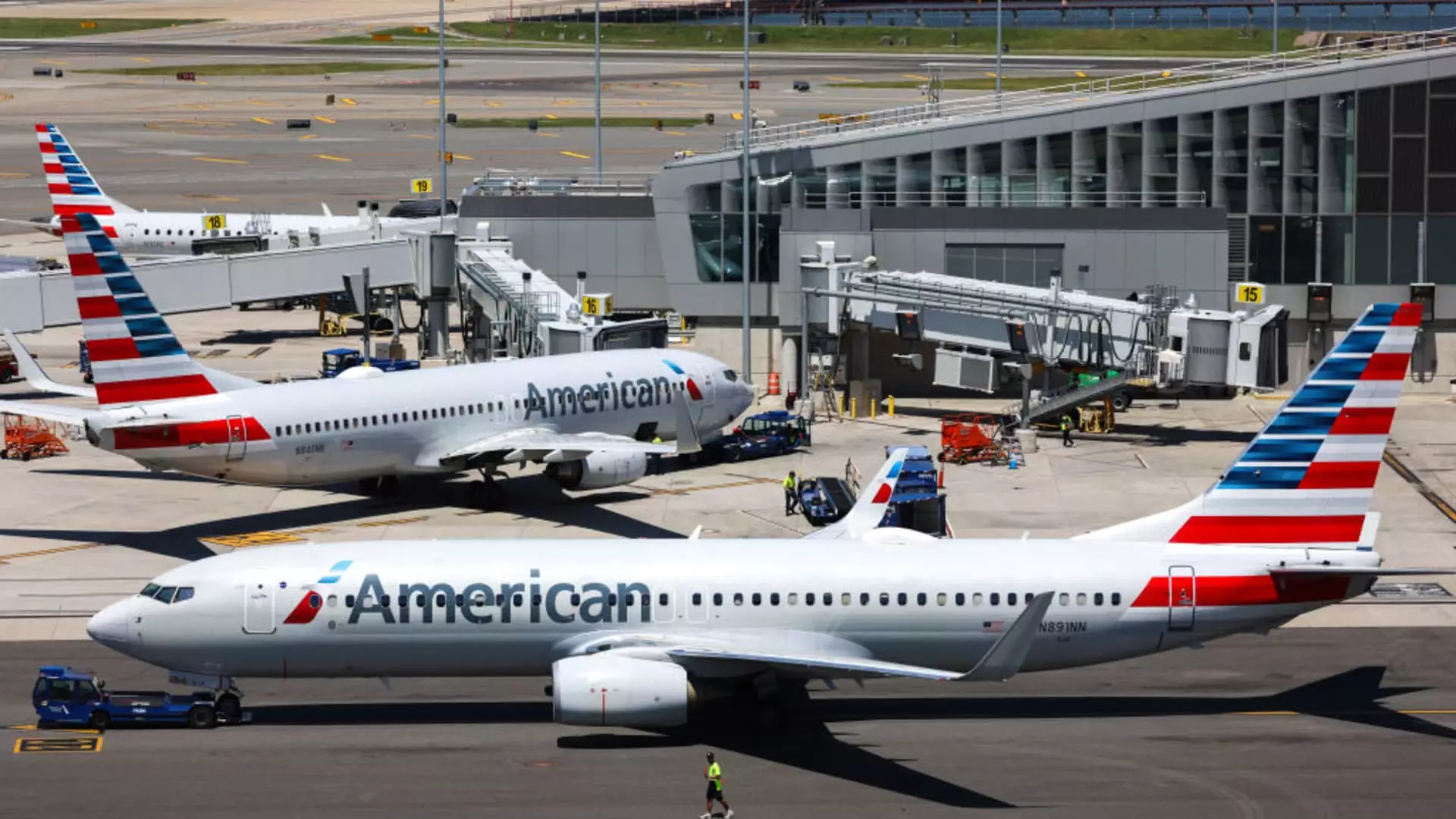American Airlines Navigates New Horizons: The Shift in Credit Card Partnerships

In a landscape that continually shifts due to evolving market demands and consumer behaviors, American Airlines is currently in discussions to designate Citigroup as its sole credit card partner, thereby terminating its lengthy collaboration with Barclays. This proposed transition marks a significant change following a partnership that has been in place since American Airlines’ acquisition of US Airways in 2013. The motivation behind consolidating partnerships with a singular issuer lies primarily in the airline’s desire to enhance profitability through its loyalty program, a move that has garnered attention for its potential long-term implications.
Loyalty programs are pivotal for airlines, providing essential revenue that can prove invaluable, particularly in challenging economic conditions. In the past few years, these arrangements have proven crucial as travel demand fluctuated due to external global factors, including the pandemic. Despite a downturn in passenger travel, consumers remained engaged in spending, which allowed airlines to maintain a flow of income through co-branded credit cards. American Airlines has recognized that an effective partnership with a bank not only fosters customer loyalty but significantly contributes to revenue generation.
The stakes involved in co-brand negotiations can often lead to intense competition amongst prominent financial institutions. Major banks see co-brand agreements as an opportunity to access a dedicated customer base that spends significantly across various channels. However, the intricate details of these agreements can either boost or diminish profitability for both parties involved, making negotiations both contentious and vital.
While American Airlines boasts one of the largest loyalty programs in the industry, it finds itself in a competitive juxtaposition with Delta Airlines, which outperformed it last year in terms of revenue from credit card partnerships. Delta’s collaboration with American Express yielded approximately $7 billion, overshadowing American’s $5.2 billion from its existing credit card arrangements. This competitive disparity highlights the necessity for American to re-evaluate its partnerships and seek maximal advantages from its credit card program.
American’s representatives have indicated ongoing evaluations with all its partners to enhance services and elevate the customer experience within its loyalty program. This signifies an understanding that to retain a competitive edge, adaptations and improvements are essential in delivering added value to customers within their loyalty endeavors.
While negotiations with Citigroup progress, potential regulatory hurdles loom. U.S. regulatory bodies, including the Department of Transportation, may pose obstacles that could delay or entirely derail an agreement between American Airlines and Citigroup. Such complications may necessitate a continuation of the current arrangement with Barclays, which, despite being overshadowed in spend metrics, still retains a vital position within the existing corporate structure.
In contrast to standard industry practices where brands tend to work with a single issuer, American Airlines has carved a unique path. The decision to engage both Citigroup and Barclays stems from its merger with US Airways. This dual-issuer strategy has enabled American to maintain a broader customer base, although it introduced complexity into the partnerships when it came to marketing and customer engagement strategies.
Should a deal between American Airlines and Citigroup be finalized, it may represent a transition towards a more consolidated approach in the airline’s financial strategy. The potential agreement would likely extend over a seven to ten-year period, providing Citigroup with adequate time to recover associated costs while streamlining operations. Furthermore, Citigroup’s recent strategic direction under CEO Jane Fraser aims to enhance profitability in the credit card sector, indicating an ambitious vision for future partnerships.
In pursuit of these goals, Citigroup has articulated a commitment to developing mutually beneficial arrangements with American Airlines that focus on customer experience and growth. Meanwhile, Barclays appears to be pivoting its strategy to broaden its footprint, aiming to diversify its co-branded portfolio beyond the aviation sector and into collaborations with retail and technology entities.
American Airlines finds itself at a crossroads, facing the critical task of re-evaluating its credit card partnerships while navigating regulatory landscapes and competitive pressures. The outcome of these negotiations with Citigroup could have profound implications not only for the airline’s financial health but also for its relationship with customers who rely on loyalty benefits. In a market characterized by rapid changes and evolving consumer expectations, maintaining agility in partnerships and focusing on innovative product offerings will be essential for American Airlines as it moves forward into an uncertain future.





